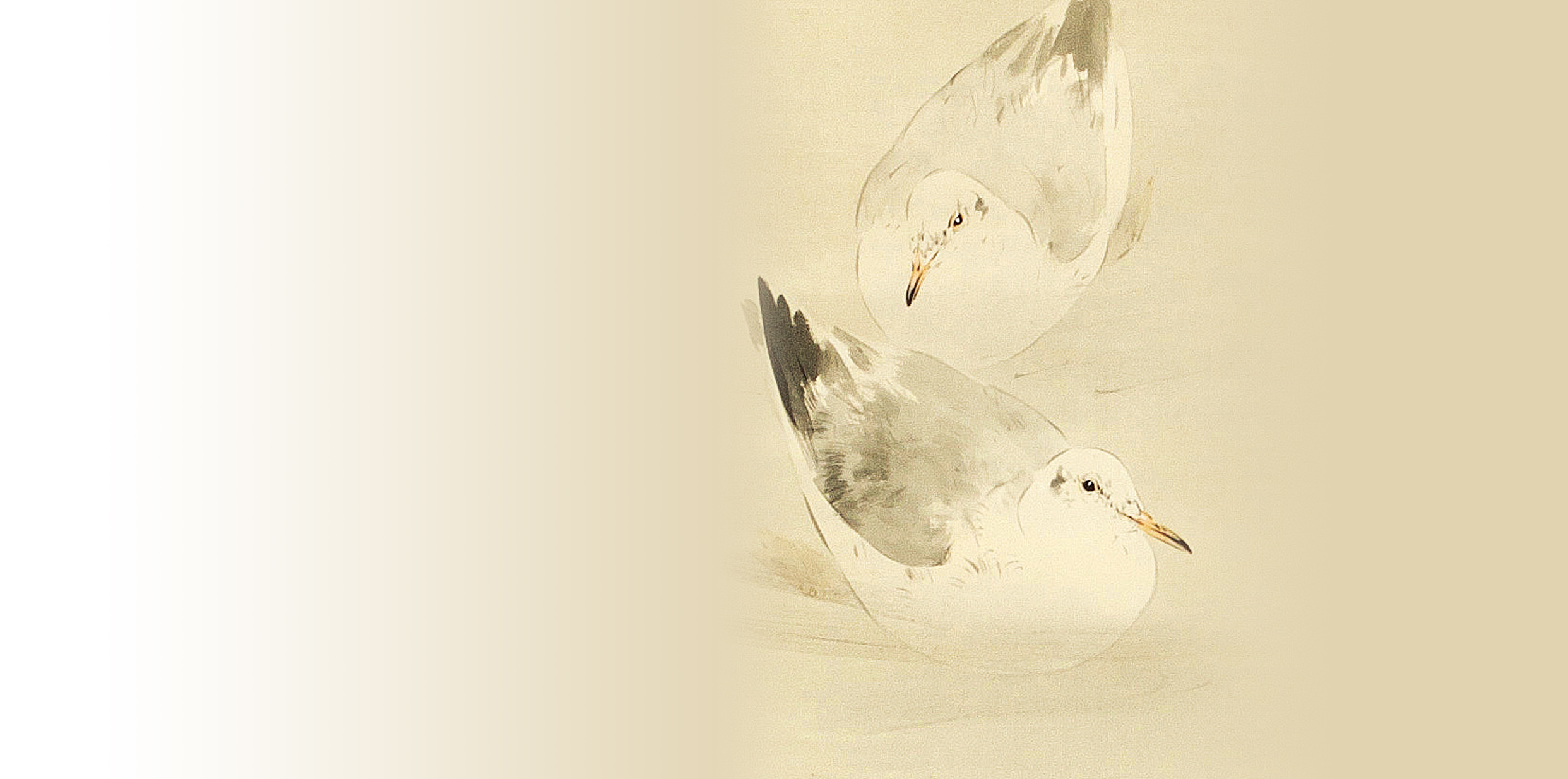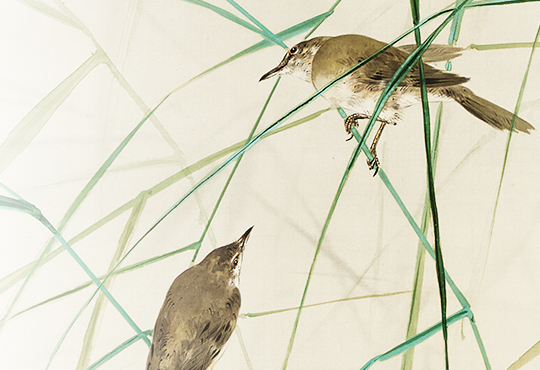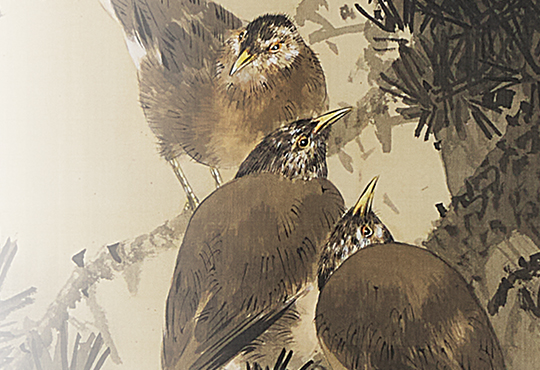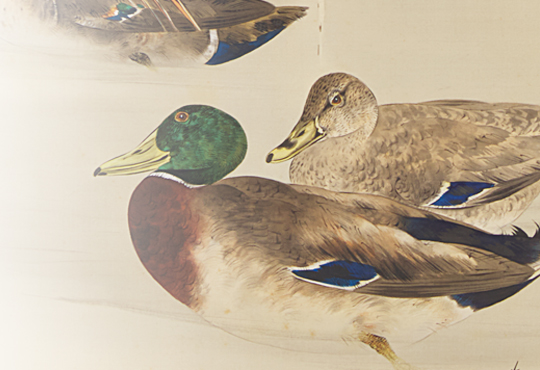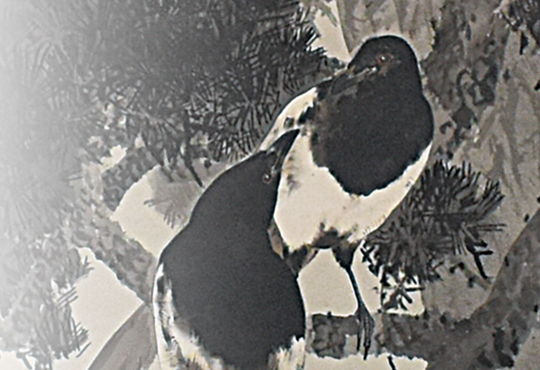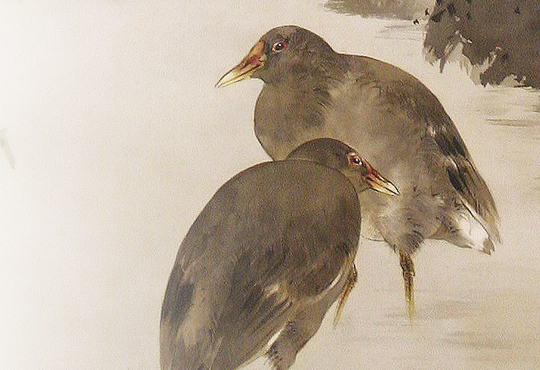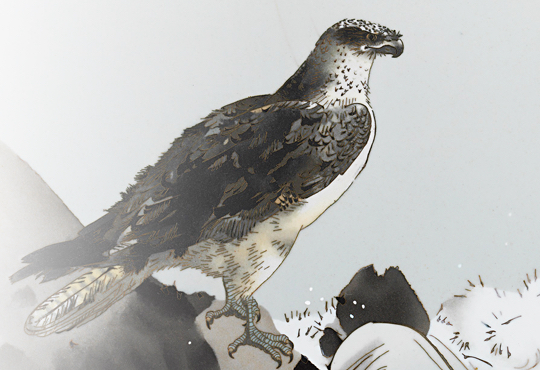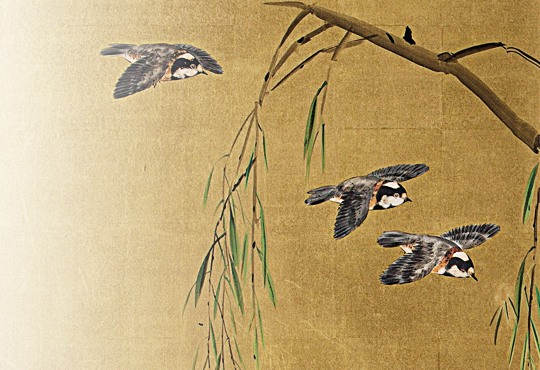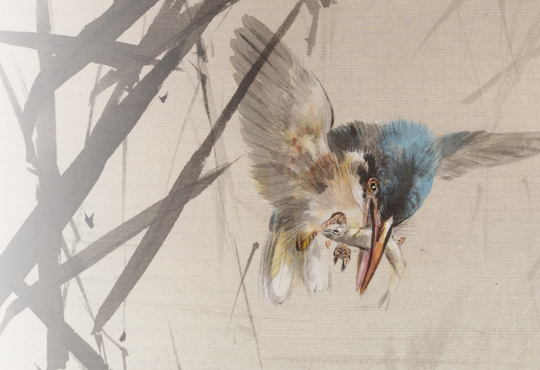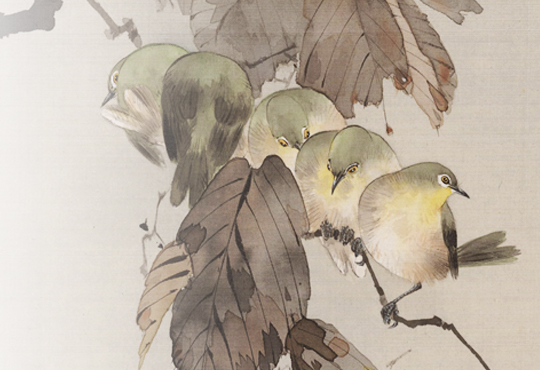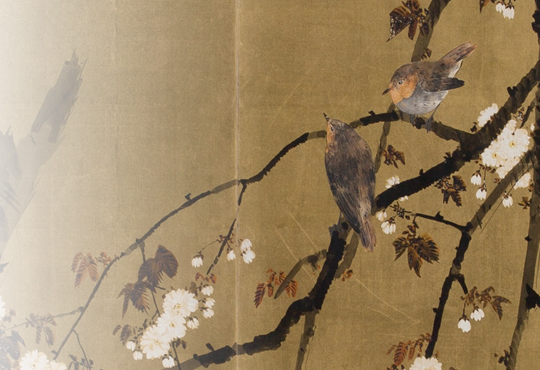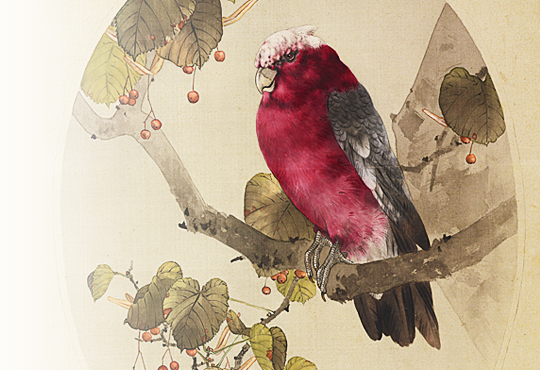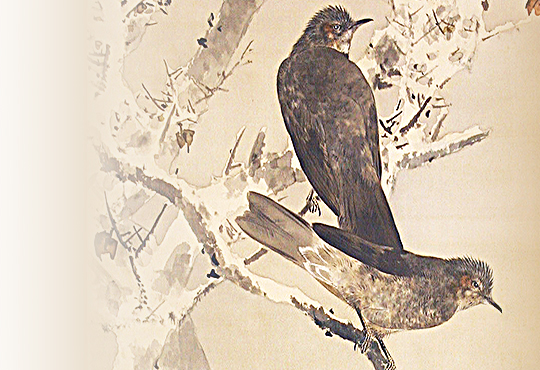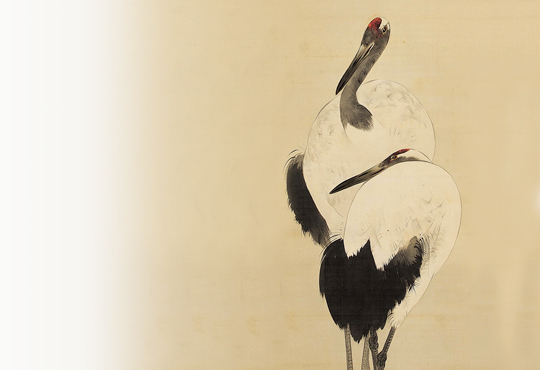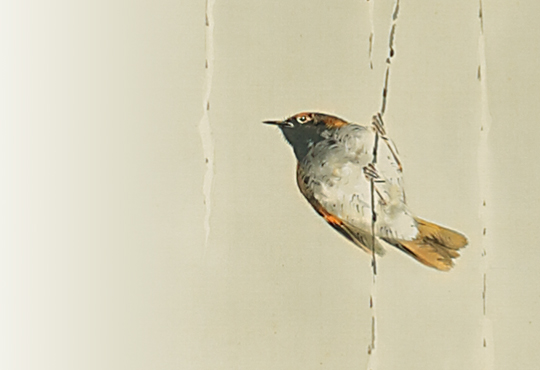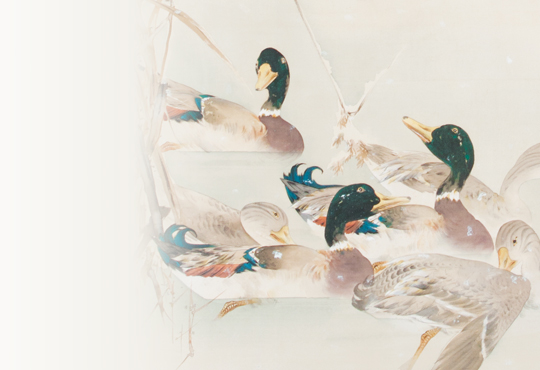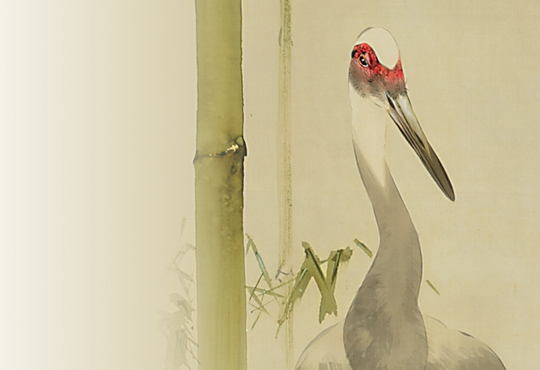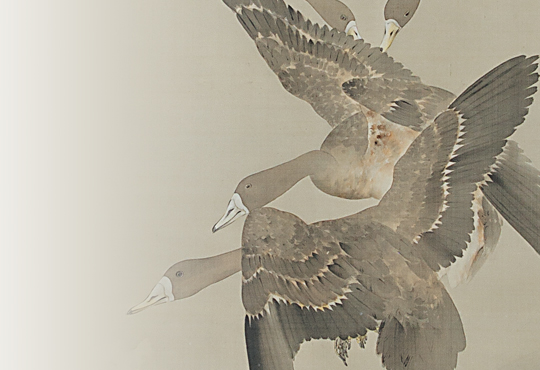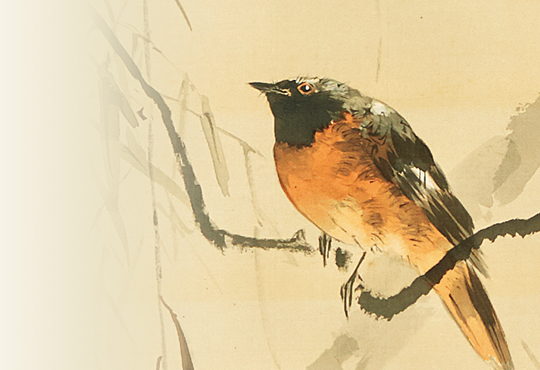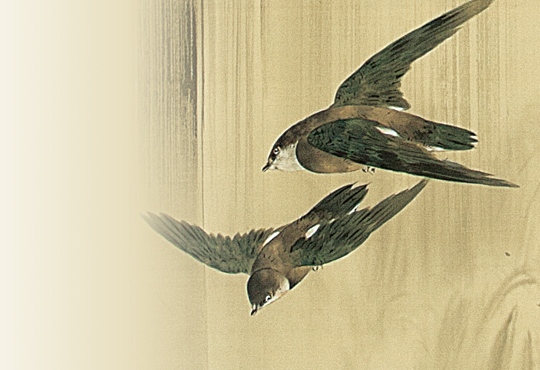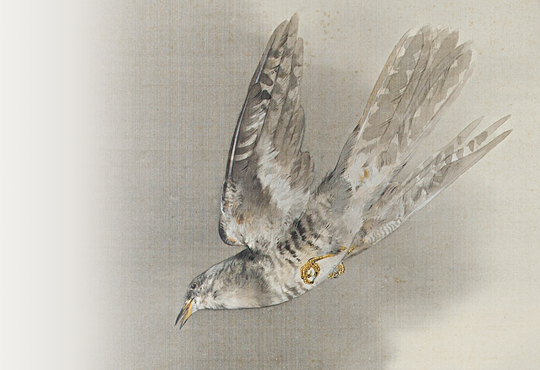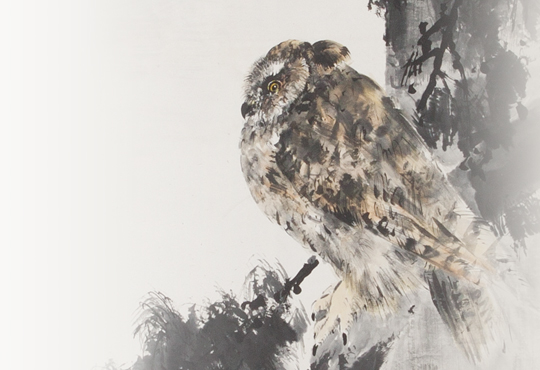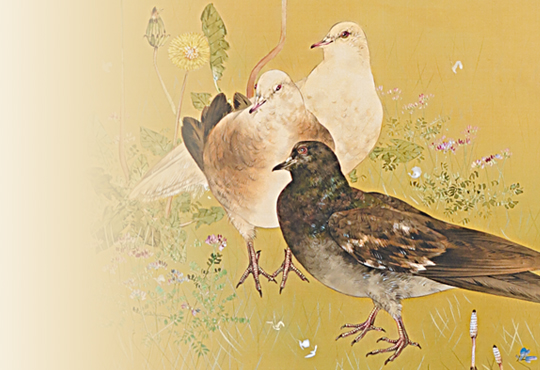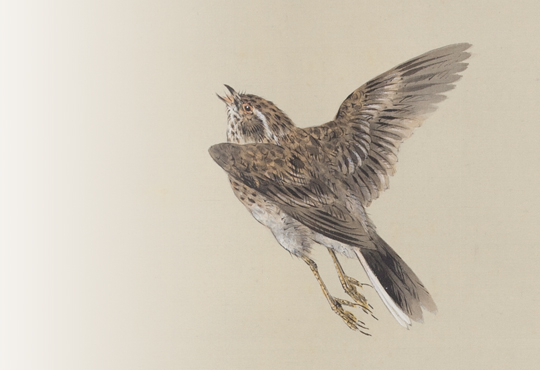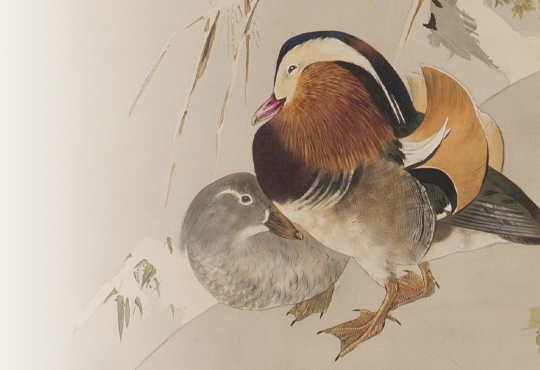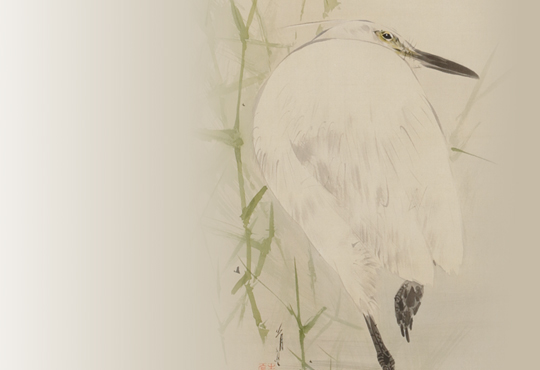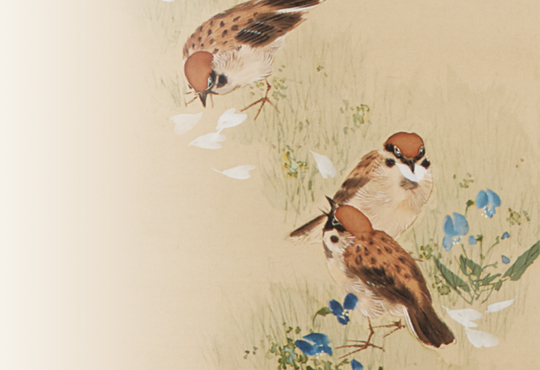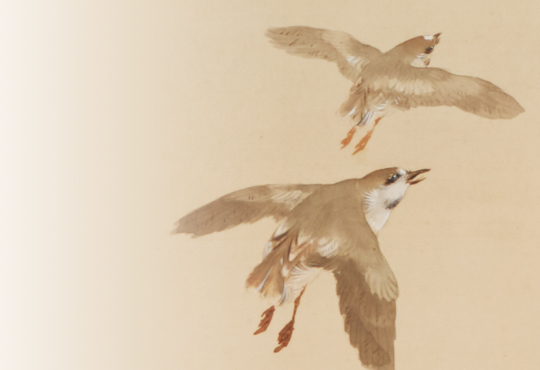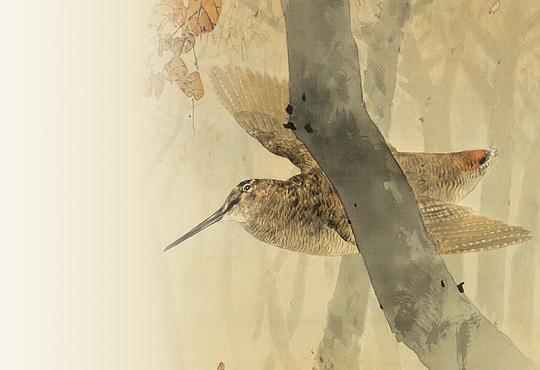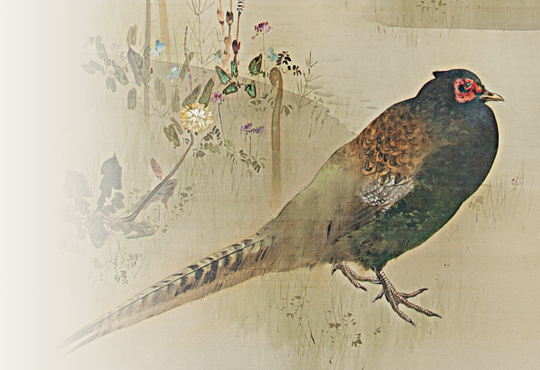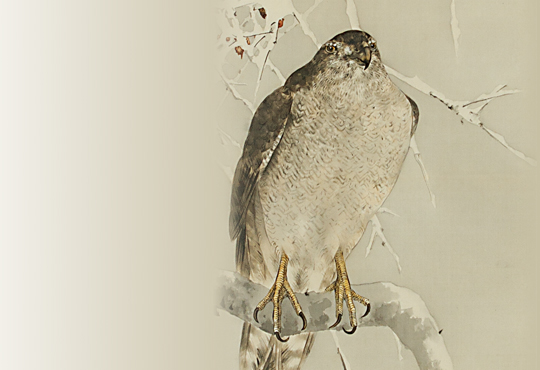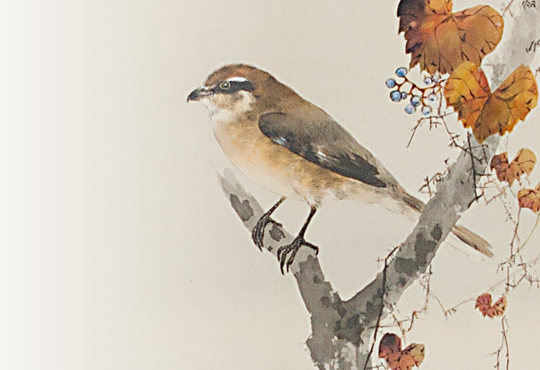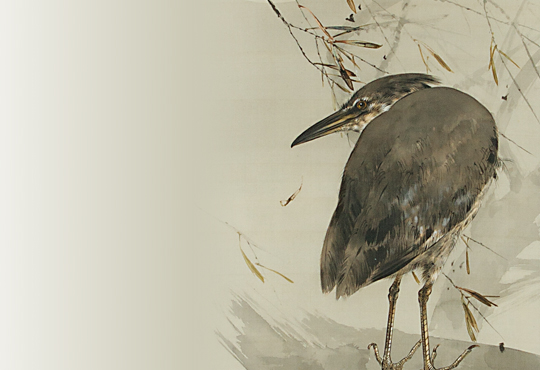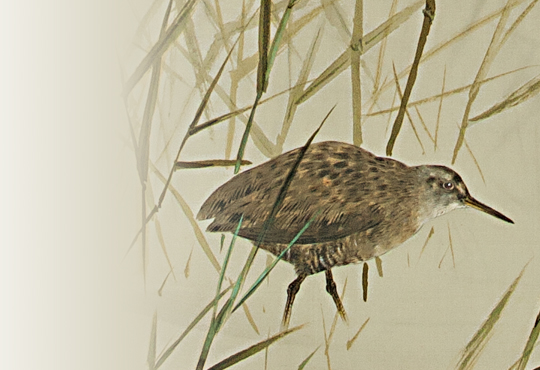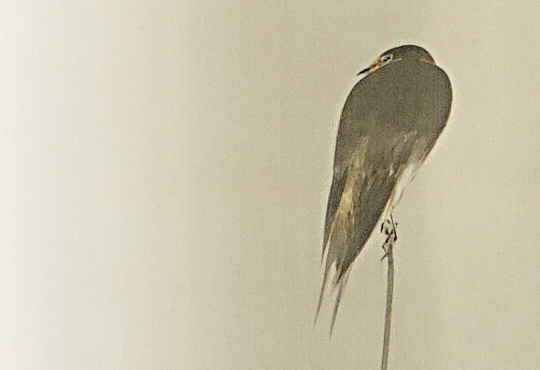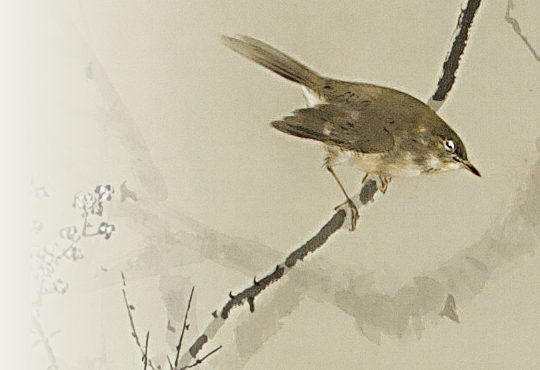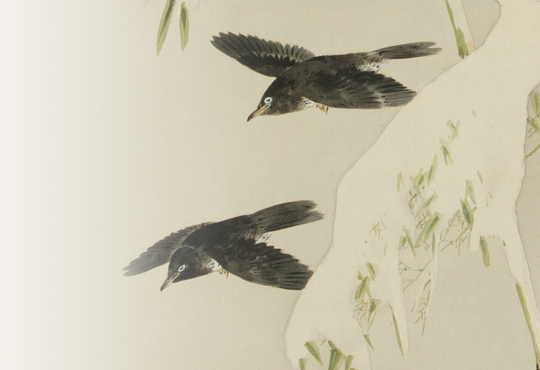vol.14 Stillness and Motion / White and Black: The Black-Headed Gull
Generally, flower and bird paintings give images of tranquility. Trees like pines and cherry blossoms, and vegetations like bamboos, bamboo grasses, maiden silver grass, and fringed pink, give color and fragrance, and curb all feeling of motion and sound. This effect brings a unique stillness to the painting. This stillness, however, may not always be a positive quality in paintings, and works that appear too still lack aesthetic appeal. In such cases, birds become important in their role to revive the work and, through their movements (such as, by walking, perching, flying, singing, swimming, etc.), function to counteract the suppression of motion and sound. As such, it is this balance, between the stillness of plants and the motion of birds, which defines the great artistry of the flower and bird painting.
Although there are little vegetation in this work, the image retains a certain stillness. There are three stakes, one reed in the foreground, and a gentle water flow in the middle that indicates a waterside landscape, like riverside or coast. Two Black-headed Gulls float peacefully on the water and, as I will later explain, these gulls are in their white winter-form. Slightly green, the reed has not yet entirely withered and the season therefore suggests to be late autumn. The entire work appears pale, hazy and hedged in silence without any movement from the water, gulls, and reed.
Black-headed Gulls (Larus ridibundus: 40cm in length) represent the smallest of the eight species of gulls observed commonly in Japan. They live in wetlands, like rivers and coasts, and eat fish and small animals. They are distributed widely across the Eurasian continent from Europe to East Asia, and, in winter, many migrate from the far east of Russia to Japan. Although they are less common in northern Japan because they are prevalent only during late autumn or early spring, in the east and west of Japan, they are familiar birds that live urban waterfronts. Typically, a Black-headed Gull has a white or light grey body, black wings, red beak, and red legs. However, -being white with black spots around their ears in winter but completely black, as if wearing a black hood, in summer,- the color of their heads change with the seasons. Moreover, while most of gulls look menacing, the Black-headed Gull has a very cute look. Their appearance, coupled together with their smallness, make them popular birds. On another note, the Black-headed Gull was once called “Miyako-dori”, but now this old Japanese name refers to the Eurasian Oystercatcher (Haematopus ostralegus), a completely different bird.
The first time I saw this work, I felt slightly strange. Since two Black-headed Gulls occupy the upper left of the painting and two large stakes occupy the lower right, the left margin in this composition is relatively small. As such, the “space” resides to the right and expands beyond the painting. As the former Black-headed Gull looks to the right, its gaze consequentially expands the space outside of the work. In contrast, because the bird’s tail borders the left, there is no implication of an external space to the left of the composition. As a result, this depiction of the space between right and left gives the work a strange and disproportionate appearance.
To retain balance, the work requires something that would fill and contain the space of the right side of the work. Thus, I suspect there must have been a complementary painting that would have been placed to the right of this work. Possibly one which has a space that extends past the left of its composition and shows the same waterside landscape with a Black-headed Gull. Pairing both works, this counter piece would have been set in spring and, thus, the gull would have a black head. Juxtaposing this with the two white gulls in the original piece, I believe this counterpart would have had a single black gull. Furthermore, since the original work represents stillness, its counterpart must show some motion, i.e. by depicting a flying black gull. With this, I’d like to expand upon my vision of this counterpart.
As a continuation of the original piece, the bottom left corner of this painting would contain some old stems and a few flourishing stems of reeds. In the middle, a black faced, summer-form gull would fly towards the left. This bird would have been placed in a manner in which it returns the gaze of the gull in original painting. Raising its slender wings, its black head and wing tips controls the composition, and its red beak and legs would insert color. In the right edge, its open tail would fill the margins and seal the space of the composition and, thus, the spatial imbalance would disappear when these works are paired. Establishing harmony between two disparities, the black right provides motion and dynamism while the white left maintains a certain stillness.
This counter piece exists only in my imagination. Yet, there may just possibly be a “motion-painting” with a black-faced gull. Seitei must have known about the Black-headed Gull’s summer-form and perhaps he would have also wanted to draw them too. Otherwise, someone else may awake this partner piece, of “black” and “motion”, sometime, someplace. Nevertheless, I will be dreaming for the day that “the legendary paired paintings of Black-headed Gulls” will finally be complete.
Author : Masao Takahashi Ph.D. (Ornithologist)
Dr. Masao Takahashi was born 1982 in Hachinohe (Aomori prefecture) and graduated from Rikkyo University’s Graduate School of Science. Dr. Takahashi specializes in behavioral ecology and the conservation of birds that inhabit farmlands and wet grasslands. Focusing on the relation between birds and art, he has participated in various museum and gallery talks.
